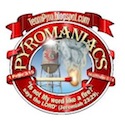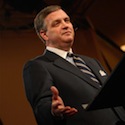
by Bret Capranica | Oct 1, 2013 | Featured Articles, Presidential History, Time/Life Management
Mixing two of my interests (Presidential History and productivity), I was intrigued by this Vanity Fair article on President Obama. I’m quite sure it was part of the 2012 election public relations strategy, but I did find a few interesting approaches from the current President to streamline decision making, keep himself focused, structure meetings, and working with people. Just two short excerpts: Routine and Its Impact on Decision-Making This time he covered a lot more ground and was willing to talk about the mundane details of presidential existence. “You have to exercise,” he said, for instance. “Or at some point you’ll just break down.” You also need to remove from your life the day-to-day problems that absorb most people for meaningful parts of their day. “You’ll see I wear only gray or blue suits,” he said. “I’m trying to pare down decisions. I don’t want to make decisions about what I’m eating or wearing. Because I have too many other decisions to make.” He mentioned research that shows the simple act of making decisions degrades one’s ability to make further decisions. It’s why shopping is so exhausting. “You need to focus your decision-making energy. You need to routinize yourself. You can’t be going through the day distracted by trivia.” The self-discipline he believes is required to do the job well comes at a high price. “You can’t wander around,” he said. “It’s much harder to be surprised. You don’t have those moments of serendipity. You don’t bump into a friend in a restaurant you haven’t seen in years. The loss of anonymity and the loss of surprise is an...
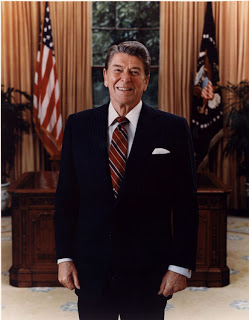
by Bret Capranica | Sep 4, 2013 | Presidential History
Over the past two weeks I’ve been reading through Richard Reeve’s, President Reagan. Reeve is an accomplished presidential biographer. While no friend to Reagan’s political philosophy, Reeve does paint a more objective picture than many of the former president’s detractors. Typically when I am reading a presidential biography I am mostly on the hunt for the habits that mark his leadership style. Here are a few I have marked in regard to his first term: From the Introduction Reagan had the virtues and failings of an old man: He already knew what he wanted to know, he was set in his ways, stubborn, and he did not generally care what journalists or the hired help thought of him. He was not obsessed by history, as were Kennedy and Nixon (xiii). A note Reeves marked in Calvin Coolidge’s autobiography that Reagan read while in the White House: “In the discharge of the duties of the office there is one rule of action more important than all others. It consists in never doing anything that some one else can do for you” (xiii). I do not subscribe to the many theories of Reagan’s passivity. It is true that much of any presidency is essentially reactive, dealing with crises unpredictable and unanticipated-strikes, bombings, market crashes, revolutions, plagues – but the President Reagan I found in the course of my research was a gambler, a bold, determined guy (xiv). I do not think Reagan was an unwitting tool of a manipulative staff. Quite the opposite (xv). He knew how to be President. The job does not pay by the hour. Presidential naps don’t...

by Bret Capranica | Apr 2, 2011 | Featured Articles, Ordinary Pastor, Pastoral Ministry, Presidential History, Time/Life Management
What should an ordinary pastor glean from how the President”™s office was organized and functioned? The pastorate is not a political machine like the White House, so many issues are simply inappropriate and unnecessary. But I can find a number of helpful points to consider when thinking through how a pastor should think about how to make the best use of his time. A pastor can”™t run ministry on his own, but needs key and capable people to rely upon. The biblical principle of eldership indicates that no one man should be directing the affairs of the church. Qualified and capable men who can collectively oversee the church”™s ministry are needed. Ephesians 4:11-16 is a great picture of every part of the body doing its share, with pastors assuming one key role ““ that of equipping others to carry out the ministry. We need some regular (daily, weekly, monthly, quarterly, annual) time to think, write, plan, pray, and rest. Otherwise, a pastor”™s time will be reactive rather than proactive; he will lose focus on what is most important for the whole of the church because he is caught up in putting out immediate fires, and he will mentally and emotionally wear himself out from trying to keep up with every conceivable issue beyond his control. Trust and focus are key commodities in how we work with staff around us. Written plans culled and vetted by key staff as opposed to spur-of-the-moment conversations with innumerable personalities provides a more proactive, and thoughtful approach to advancing ministry objectives. Ministry needs to be thought through. What are the biblical parameters and implications...
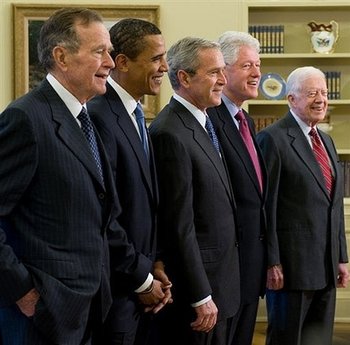
by Bret Capranica | Apr 1, 2011 | Featured Articles, Presidential History, Time/Life Management
Richard Nixon”™s approach to running the West Wing reshaped the role of the Chief of Staff to the point that it is still largely used to this day in the Office of the President. Interestingly, Eisenhower had a Chief of Staff, but most decisions were made by Cabinet Secretaries. Kennedy did not have a Chief of Staff and operated in a more free style with no intentional chain of command as to how decisions were made. Nixon changed the approach so that decisions were made in the White House and executed then by Cabinet Secretaries. He divided White House responsibilities into 3 areas: Domestic Council, National Security Council, and the Office of the President. Nixon wanted information mostly in written form and received it only from a few people with whom he would discuss it. They created the position of the Staff Secretariat who distributed the paper work appropriately. Trust was the most important commodity. Nixon was a very private person and preferred to consider succinct written proposals, summaries or analyses, with a few people. Decisions were made in the White House and Cabinet Secretaries executed those decisions. 7:30 a.m. was the start time for most White House senior officials. Nixon was careful with his public activities and focused on what would be the most significant issues. The president spent a tremendous amount of time on fewer things. Haldeman had a lack of ego, a passion for anonymity, but a self-confidence in his own ability. Trust and focus were his emphases. The story of the day, everyday, was “Think it Through!” Everything was thought through to the maximum. Every day at 2:00...
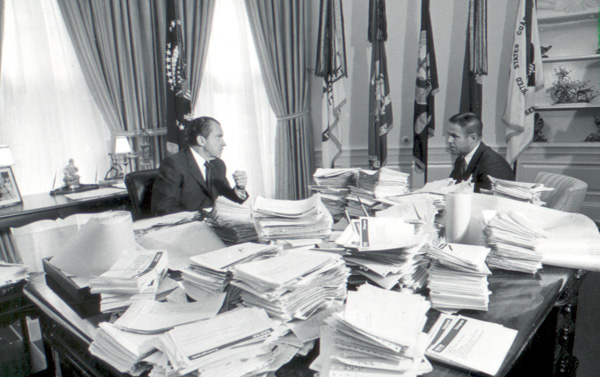
by Bret Capranica | Mar 29, 2011 | Featured Articles, Presidential History, Time/Life Management
Last year on President”™s Day, Kelly and I took a trip down to Yorba Linda and the Richard Nixon Library and Foundation. Admission was free, so we joined some 5,000 other people taking advantage of the opportunity. The highlight of the day was the panel lecture on “The Effective Use of the President”™s Time.” The panel was made up of four men who served in the West Wing of the White House and, more specifically, worked directly under H. R. “Bob” Haldeman, Nixon”™s Chief of Staff. They discussed the climate of which Nixon assumed the presidency, how foreign trips were staffed, and most importantly, how they helped the President make the best use of his time. Nixon”™s end is usually where we begin in thinking about his time in office and tends to dominate the flavor of the entirety of his presidency. That is unfortunate. Many, initiatives, policies, and governmental advancements that remain in place today were initiated during his years in the White House. In fact, the entire structure of the modern day Office of the President was essentially created during his tenure and remains in tact today. The lecture was a fascinating look into the Presidency. Today and Friday I”™ll post my bulleted notes from the lecture. On Saturday, I”™ll give a few thoughts on how these themes could bring helpful consideration to an ordinary pastor”™s ministry. Nixon was friendly, but we were not friends. Nixon lost the 1960 election because he tried to run the campaign himself. In 1968 (the year he won the Presidency), he put key managers in every position. Haldeman issued a memo in the 1968...

by Bret Capranica | Feb 28, 2011 | Featured Articles, Ordinary Pastor, Pastoral Ministry, Presidential History, Technology
Regardless of what you think of our President’s policies, Barak Obama‘s team is doing an excellent job in its use of media, particularly social media. Technology is enhancing how we communicate our messages and priorities, and the Obama White House has a firm handle on how to do it well. From the first days after his election and as the President-elect, Barak Obama began weekly video addresses (in addition to the old-guard radio address), and a series of video posts from various internal groups working on policy issues. They are always enhancing how they use media to connect with people. Media tends to connect people in a more personal way and not merely in a starched policy manner. In fact, one of the ways the White House is utilizing media well, is to bring the public inside the secured walls of the White House and show them how people and the process work. An excellent illustration of this was the 2011 State of the Union. In addition to a brief video on how the speech was constructed, the White House, for the first time, included enhanced on-line media (like a power-point presentation), chats, use of Twitter, and live online interviews with the President after the speech. I’ve seen few public sector organizations work this well on connecting people more personally. State of the Union Video There is much modern church ministry can learn from the rapid growth of technology. While the message is most important and should be the laser-like focus of leaders and members alike, technology has provided unprecedented ways to publicly broadcast our message. From the use of Twitter and Facebook to quickly inform...












